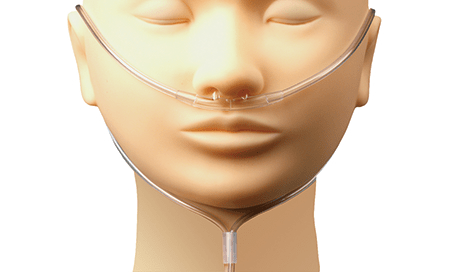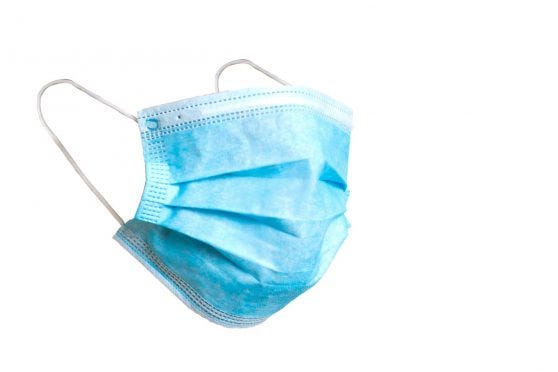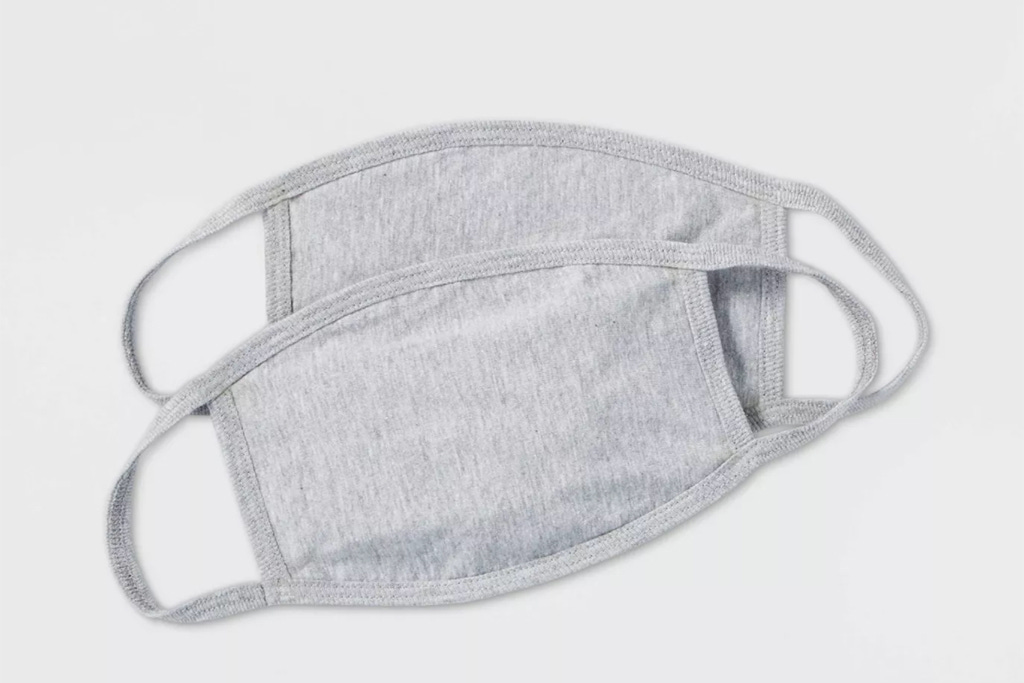A Breakdown of Face Mask Concerns and Risks
Most people are substantially familiar with the positives of wearing a face mask for the prevention of both spreading and contracting viruses such as SARS-CoV-2.
But what is more interesting to me is how unfamiliar some individuals are about the possible negatives, the cost of this counter-measure, even when used correctly. What follows is the start of a rough outline of those concerns. Next is an ordered list of sources I’ve reviewed or am actively reviewing, that may be used in the Concerns outline.
Note that there is substantial differences when analyzing N95 versus medical / surgical or cloth masks.
In the following order, there is for example, a better and better case to be made for significant increases in C02 levels as measured by nasal canula.
Each also may have different propensity with the respect to each of the Concerns listed below. Here are the types for clarification
N95 (with vent)
Surgical Mask
Cloth Mask
Concerns
Textile–skin interactions [1]
Breathability,
Stickiness
Moisture saturation
Hygiene maintenance
Increased skin temperatures
Can trigger sweat/heat‐related dermatoses
Ear loops potentially trigger pressure‐induced dermatoses
Chemical-skin interactions
Polypropylene [6]
When reused or re-sterilized, the composition of the substance can degrade
Antibacterials / Antifungals
Some masks are coated with substances to prevent colonies forming on surfaces.
Sterilized Masks [5]
Incomplete removal of sterilizing solutions (evaporation, steaming or rinsing)
Potentially allergenic dispersed dyes in garment textiles
Symptoms presented
By Research
Dyspnea [8]
Hypercapnia [10]
lowered minute ventilation [10]
Volume of oxygen consumption significantly reduced [13% - 10, 11]
Volume of carbon dioxide expired significantly reduced [18% - 10, 11]
Suggested increase in metabolism [10]
Impede gaseous exchange and impose an additional workload on the metabolic system of pregnant healthcare workers [10]
Special Cases
with Chronic Obstructive Pulmonary Disorders [11]
Issues during hemodialysis [9]
By Survey [7]
Headaches (most common)
Impaired Cognition
Hypercapnia?
Acne
Skin Breakdown
Rash
Re-aerosolisation of settled particles [2]
Restricted airflow
Chronic respiratory disorders
Underlying medical conditions, immune disorders etc.
Elderly
Outdoor or indoor exercise in heat
Psychological
False sense of security
Possible reduction in other counter-measures
Such as social distancing and quarantine / isolation.
Reduced ability to perceive or observe facial cues.
Generally, a reduced ability to socialize.
In medical settings, where masks may be regularly used, this may complicate
A doctor diagnosing his patient
Sources
The “Maskne” microbiome – pathophysiology and therapeutics https://www.ncbi.nlm.nih.gov/pmc/articles/PMC8013758/
Particulate respirators functionalized with silver nanoparticles showed excellent real-time antimicrobial effects against pathogens https://pubs.acs.org/doi/10.1021/acs.est.6b00788
Unmasking the surgeons: the evidence base behind the use of facemasks in surgery https://www.ncbi.nlm.nih.gov/pmc/articles/PMC4480558/
Examination of the literature revealed much of the published work on the matter to be quite dated and often studies had poorly elucidated methodologies. As a result, we recommend caution in extrapolating their findings to contemporary surgical practice. However, overall there is a lack of substantial evidence to support claims that facemasks protect either patient or surgeon from infectious contamination. More rigorous contemporary research is needed to make a definitive comment on the effectiveness of surgical facemasks.
In the modern era, there has also been a scarcity of experimental evidence to support the effectiveness of facemasks in the prevention of surgical site infections. The earliest retrospective studies7 failed to demonstrate any statistically significant improvement in surgical site infection rates following the use of masks. Indeed, the latest National Institute for Health and Care Excellence guidelines on the matter do not require operating staff to wear a mask in theatre.8 This decision was based primarily upon the findings of a Cochrane systematic review.9 This review was guided by the findings of two particular randomised/quasi-randomised control trials.10,11 The latest update of this review,12 which was amended after the publication of current National Institute for Health and Care Excellence guidelines, included one further study.13
Despite clear evidence that facemasks act to protect the theatre staff from macroscopic facial contamination, there are studies to suggest that they fail to protect surgeons from potentially hazardous sub-micrometre contaminants.21 This corresponds roughly to the size range of infectious bacteria while viruses are even smaller. Therefore, the protection that masks confer in the form of macroscopic facial contamination may not necessarily extend towards any microscopic infectious agents present within that contamination.
Given that there is no evidence that they cause any harm either, proponents would rather err on the side of caution and encourage their continued use, stressing that there is no room for complacency when it comes to ensuring patient safety.25 This opinion is similarly echoed by the National Institute for Health and Care Excellence guidelines which assert that mask usage contributes towards ‘maintaining theatre discipline’.
A novel perspective approach to explore pros and cons of face mask in prevention the spread of SARS-CoV-2 and other pathogens https://www.sciencedirect.com/science/article/pii/S1319016420303005
Wearing a face mask possibly create a false sense of security lead to decline others measures. Face mask could be risk for the people of under lying medical conditions, old age group, outdoor exercise, acute and chronic respiratory disorders and feeble innate immune. Restrictive airflow due to face mask is the main cause of retention of CO2 called hypercapnia that can lead to respiratory failure with symptoms of tachycardia, flushed skin, dizziness, papilledema, seizure and depression. According to latest updates face shield and social distancing could be better substitute of face mask.
Sterile and non-sterile face masks https://laegemiddelstyrelsen.dk/en/devices/advice-to-consumers-on-buying-face-masks/information-for-companies-on-face-masks/sterile-and-non-sterile-face-masks/
Effectiveness of manufactured surgical masks, respirators, and home-made masks in prevention of respiratory infection due to airborne microorganisms https://pulmonarychronicles.com/index.php/pulmonarychronicles/article/view/675/1523
For example, the material most commonly used to make surgical masks is polypropylene, either 20 or 25 grams per square meter (gsm) in density; however, masks can also be made from polystyrene, polycarbonate, polyethylene, or polyester composition. The 20 gsm mask material is made from a spun-bond process, which involves extruding the melted plastic onto a conveyor. The material is extruded into a web, in which strands bond with each other as they cool. On the other hand, the 25 gsm fabric is made via melt-blown technology, a similar process by which plastic is extruded through a die with hundreds of small nozzles and blown by hot air to become tiny fibers, again cooling and binding on a conveyor belt. After these manufacturing steps, masks are then stamped with nose strips, ear loops, and other attached pieces such as ties.30,32
Adverse Effects of Prolonged Mask Use among Healthcare Professionals during COVID-19 [SURVEY] https://clinmedjournals.org/articles/jide/journal-of-infectious-diseases-and-epidemiology-jide-6-130.php
A total of 343 healthcare professionals on the COVID-19 front lines participated in this study. The majority were female (n = 315) and 227 were located in New York City. 314 respondents reported adverse effects from prolonged mask use with headaches being the most common complaint (n = 245). Skin breakdown was experienced by 175 respondents, and acne was reported in 182 respondents. Impaired cognition was reported in 81 respondents. Previous history of headaches (n = 98), skin sensitivity (n = 164), and acne (n = 121) were found in some respondents. Some respondents experienced resolved side effects once masks were removed, while others required physical or medical intervention.
…
Prolonged use of N95 and surgical masks by healthcare professionals during COVID-19 has caused adverse effects such as headaches, rash, acne, skin breakdown, and impaired cognition in the majority of those surveyed. As a second wave of COVID-19 is expected, and in preparation for future pandemics, it is imperative to identify solutions to manage these adverse effects. Frequent breaks, improved hydration and rest, skin care, and potentially newly designed comfortable masks are recommendations for future management of adverse effects related to prolonged mask use.
[Effect of a surgical mask on six minute walking distance] - PubMed
Wearing a surgical mask modifies significantly and clinically dyspnea without influencing walked distance.
Wearing an N95 mask for 4 hours during HD significantly reduced PaO2 and increased respiratory adverse effects in ESRD patients.
Physiological impact of the N95 filtering facepiece respirator on healthcare workers https://pubmed.ncbi.nlm.nih.gov/20420727/
Results: There were no significant differences between FFR and control in the physiological variables, exertion scores, or comfort scores. There was no significant difference in moisture retention between FFR with and without exhalation valve. Two subjects had peak P(CO2) > or = 50 mm Hg. The FFR with exhalation valve offered no benefit in physiological burden over the FFR without valve. The FFR dead-space oxygen and carbon dioxide levels did not meet the Occupational Safety and Health Administration's ambient workplace standards.
…
Conclusions: In healthy healthcare workers, FFR did not impose any important physiological burden during 1 hour of use, at realistic clinical work rates, but the FFR dead-space carbon dioxide and oxygen levels were significantly above and below, respectively, the ambient workplace standards, and elevated P(CO2) is a possibility. Exhalation valve did not significantly ameliorate the FFR's P(CO2) impact.
Carbon dioxide increases with face masks but remains below short-term NIOSH limits https://pubmed.ncbi.nlm.nih.gov/33858372
Conclusion: Although, significant increase in CO2 concentrations are noted with routinely used face-masks, the levels still remain within the NIOSH limits for short-term use. Therefore, there should not be a concern in their regular day-to-day use for healthcare providers. The clinical implications of elevated CO2 levels with long-term use of face masks needs further studies. Use of PAPR prevents relative hypercapnoea. However, whether PAPR should be advocated for healthcare workers requiring PPE for extended hours needs to evaluated in further studies.







